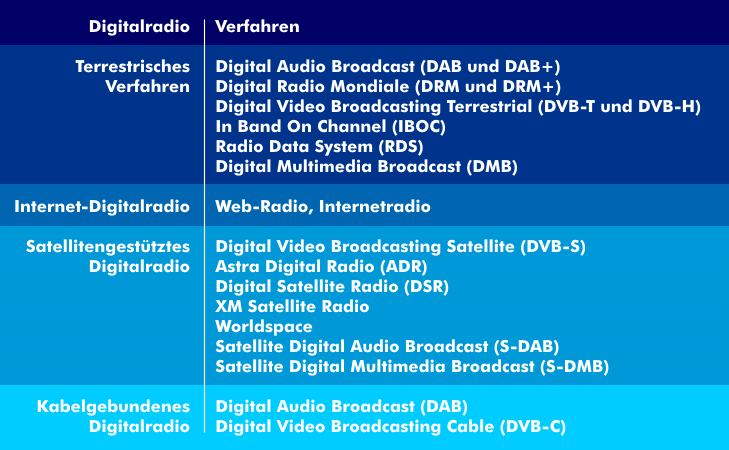satellite radio (SR)
In addition to terrestrial broadcasting, there is also satellite-based broadcasting. Satellite radio( SR) offers advantages whenever the terrestrial broadcasting infrastructure is not sufficiently developed or the reception quality does not meet the requirements. In the case of terrestrial broadcasting, this can be due to the frequency range, modulation and transmission technology. The number of channels and thus the range of channels, audio quality and reception at changing locations are major advantages of satellite radio.
Satellite radio is always broadcast as digital radio and can be received wherever there is a line of sight( LOS) between the antenna and the satellite. In difficult reception conditions between high-rise buildings or in tunnels, local repeaters are installed to broadcast the satellite signals. Broadcasting takes place via communications satellites in the L-band at 1.5 GHz and also in the S-band at 2.3 GHz. It is always unidirectional in the downlink from the satellite to the receiving equipment.
In Europe, digital radio, Satellite Digital Audio Broadcast( S-DAB), is also broadcast as satellite radio; in the U.S., there is XM Satellite Radio, which uses three GEO satell ites, Sirius Satellite Radio, which broadcasts from orbiting HEO satellites, and WorldSpace Satellite Radio, which broadcasts Satellite Digital Audio Radio Service( SDARS).

